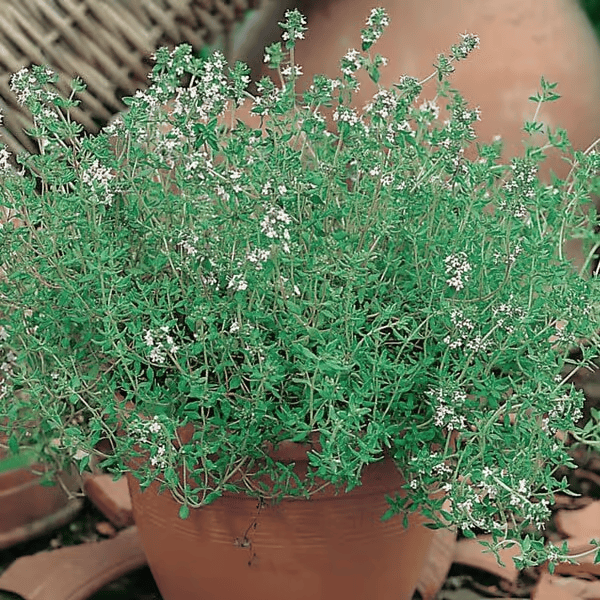Thyme is a popular herb in the mint family, valued for its earthy, slightly minty flavor and pleasant aroma. Its small, gray-green leaves are commonly used to season soups, stews, sauces, meats, and vegetables, and it is a staple in Mediterranean cooking and spice blends like herbes de Provence.
Beyond its culinary role, thyme has been used medicinally for centuries. Its compounds exhibit antimicrobial and anti-inflammatory properties, making it helpful for treating respiratory infections, coughs, and sore throats. Rich in antioxidants, thyme has also been studied for potential cognitive benefits and its ability to reduce the risk of certain chronic diseases.
Thyme is a hardy, easy-to-grow herb, making it a favorite among home gardeners. It thrives in well-draining soil and a sunny spot and can be propagated from seeds, cuttings, or by dividing an established plant.
For indoor sowing (February-May), start seeds on a warm kitchen windowsill. Sow thinly, 0.5 cm (¼ inch) deep, in small pots of compost. Keep the soil moist and place in a warm area at 15-20°C (60-68°F). Seedlings typically appear in 14-28 days. Once large enough, transplant seedlings individually into 8 cm (3-inch) pots. Allow them to grow on in cooler, but frost-free conditions. Gradually acclimate plants to outdoor conditions before planting them out 25 cm (10 inches) apart from May to July in warm, well-drained soil. Provide cloche protection in autumn to extend harvesting into winter.
Harvesting: Pick fresh leaves and tender shoots as needed from March to November. Thyme can also be dried and stores well. For optimal flavor, cut off flowering shoots before they bloom.

